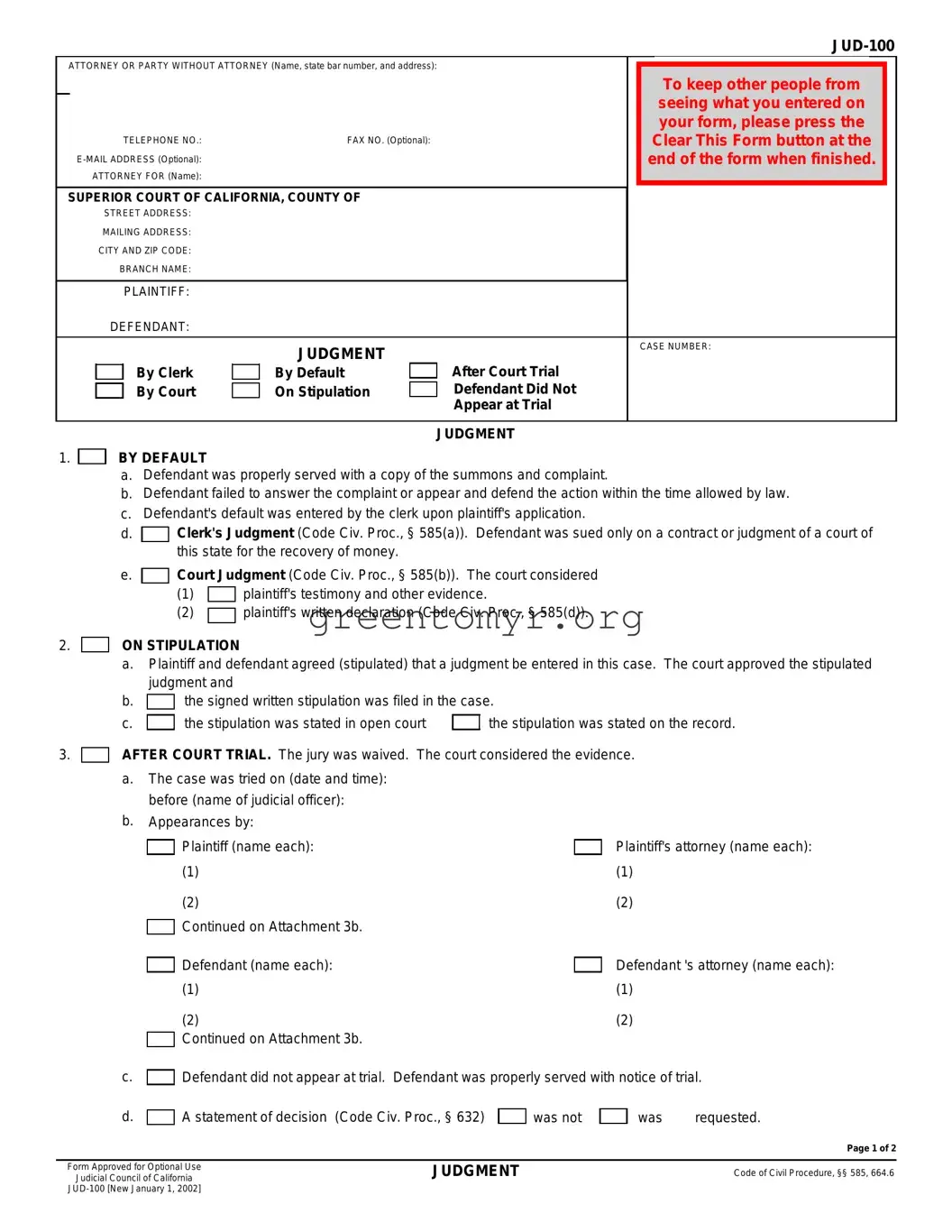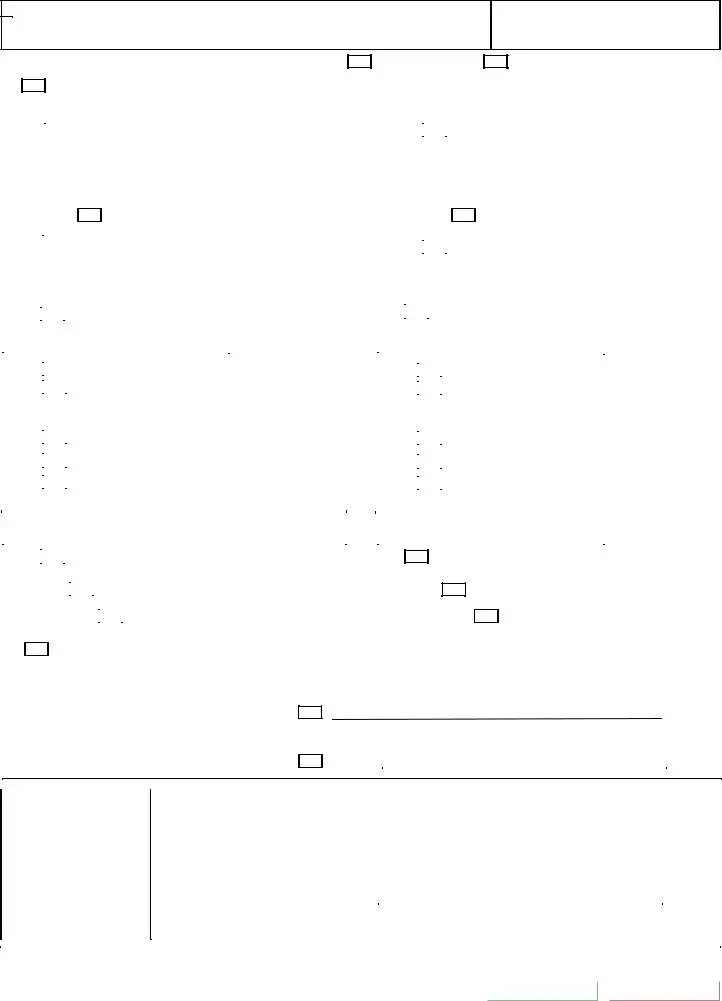When filling out the JUD-100 form, many people inadvertently make mistakes that can lead to delays or issues with their case. One common error is failing to provide complete contact information. It's essential to include your name, address, and telephone number accurately. Missing or inaccurate information can hinder communication between the court and the parties involved.
Another frequent mistake occurs when individuals forget to specify whether they are filing on behalf of an attorney or representing themselves. This section is crucial as it determines how the case is handled in the legal system. Choosing the correct option ensures that all parties receive proper notifications and that the case proceeds smoothly.
Many people also neglect to attach supporting documents. If the judgment relies on evidence, such as a stipulation or prior court orders, failing to include these can cause complications. Always check that you have attached all necessary documents before submitting the form.
Additionally, errors in the case number can lead to significant problems. Make sure that the court case number is entered correctly and matches the information in the court’s records. Providing the wrong number might result in misfiled documents or excessive delays.
Another key mistake involves the miscalculation of damages. It’s vital to accurately total all amounts, including damages, interests, costs, and attorney fees. An incorrect total can lead to disputes and may require additional hearings to resolve.
Omitting required signatures is another issue that arises frequently. Ensure that all necessary parties sign the form in the designated areas. If the signatures are missing, the court may reject the filing, requiring additional time for resubmission.
Lastly, some individuals overlook the importance of providing a brief yet clear description of the judgment being requested. This should summarize the relief being sought from the court. A lack of clarity in this section can create confusion during the court's review process.
Avoiding these mistakes will improve the chances of your form being processed quickly and efficiently. Always double-check your entries to ensure accuracy and completeness before finalizing your submission.


